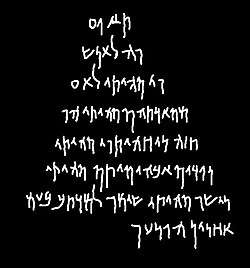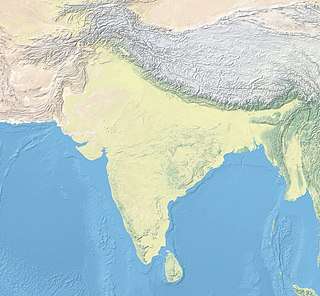Pul-i-Darunteh Aramaic inscription
| Pul-i-Darunteh Aramaic inscription | |
|---|---|
 Pul-i-Darunteh Aramaic inscription | |
| Material | Natural stone. |
| Writing | Aramaic |
| Created | circa 260 BCE |
| Period/culture | 3rd Century BCE |
| Discovered | 34°35′05″N 70°11′00″E / 34.5846°N 70.1834°ECoordinates: 34°35′05″N 70°11′00″E / 34.5846°N 70.1834°E |
| Place | Pul-i-Darunteh, Laghman Province, Afghanistan |
| Present location | Pul-i-Darunteh, Laghman Province, Afghanistan |


The Pul-i-Darunteh Aramaic inscription, also called Aramaic inscription of Lampaka, or Laghman I inscription, is an inscription on a rock in the valley of Laghman ("Lampaka" being the transcription in Sanskrit of "Laghman"), Afghanistan, written in Aramaic by the Indian emperor Ashoka around 260 BCE. It was discovered in 1932 at a place called Pul-i-Darunteh. Since Aramaic was the official language of the Achaemenid Empire, which disappeared in 320 BCE with the conquests of Alexander the Great, it seems that this inscription was addressed directly to the populations of this ancient empire still present in northwestern India, or to border populations for whom Aramaic remained the language of use.[1]
Background
The discovery of this inscription follows that of several other inscriptions in Aramaic or Greek (or both together), written by Asoka. The most famous is the Bilingual Kandahar Inscription, written in Greek and Aramaic, or the Greek Edicts of Ashoka, also found in Kandahar. Earlier, in 1915, Sir John Marshall had discovered the Aramaic Inscription of Taxila. In 1956, another inscription was discovered in the Laghman Valley about thirty kilometers away, the Aramaic Inscription of Laghman. Then in 1963 an inscription in "Indo-Aramaic" alternating the Indian Prakrit language and the Aramaic language, but using only the Aramaic script, the Aramaic parts translating the Indian parts transcribed in the Aramaic alphabet, was also found in Kandahar. This is the Aramaic Inscription of Kandahar.[1].
Content of the inscription
The inscription is incomplete. However, the place of discovery, the style of the writing, the vocabulary used, makes it possible to link the inscription to the other Ashoka inscriptions known in the region. In the light of other inscriptions, it has been found that the Pul-i-Darunteh inscription consists of a juxtaposition of Indian and Aramaic languages, all in Aramaic script, and the latter representing translations of the first.[2]. This inscription is generally interpreted as a translation of a passage of the Major Pillar Edicts n°5 or n°7,[3] although others have proposed to categorize it among the Minor Rock Edicts of Ashoka.[4].
See also
- List of Ashoka Edicts
- Kandahar Bilingual Rock Inscription
- Asoka - the Buddhist Emperor of India /Chapter 4 by Vincent Arthur Smith: The Rock Edicts (this version)
References
- 1 2 A new Aramaic inscription of Asoka found in the Laghman Valley (Afghanistan), André Dupont-Sommer Proceedings of the Academy of Inscriptions and Belles-Lettres Year 1970 114-1 p.173
- ↑ Essenism and Buddhism, Dupont-Sommer, André, Proceedings of the Academy of Inscriptions and Belles-Lettres Year 1980 124-4 pp.698-715 p.706
- ↑ Handbuch der Orientalistik by Kurt A. Behrendt [https: //books.google.com/books?id=C9_vbgkzUSkC&pg=PA39 p.39]
- ↑ Inscriptions of Asoka from DC Sircar p.33
